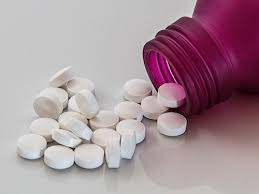Depression is a common mental health condition that can be difficult to treat, and many people may not respond to the first medication they try. Antidepressant combination therapy involves using two or more medications to treat depression to address a wider range of symptoms. In this blog, we will explore the types of antidepressant combinations, their benefits, and their drawbacks for those considering this treatment option.
Contents
What Is Antidepressant Combination Therapy?

Antidepressant combination therapy involves using two or more different types of antidepressants to treat depression. This approach is typically used for severe or treatment-resistant cases. Different classes of medications such as SSRIs, SNRIs, TCAs, or MAOIs may be combined to target multiple neurotransmitter systems in the brain.
However, combination therapy should only be used under the guidance of a healthcare provider due to the potential for side effects and drug interactions.
Types Of Antidepressants
Here are some common types of antidepressants:
- Selective serotonin reuptake inhibitors (SSRIs): These are some of the most commonly prescribed antidepressants and include medications like fluoxetine (Prozac), sertraline (Zoloft), and escitalopram (Lexapro). They work by increasing levels of the neurotransmitter serotonin in the brain.
- Serotonin-norepinephrine reuptake inhibitors (SNRIs): These medications include venlafaxine (Effexor), duloxetine (Cymbalta), and desvenlafaxine (Pristiq). They increase levels of both serotonin and norepinephrine in the brain.
- Tricyclic antidepressants (TCAs): These are older antidepressants that are less commonly used today due to their potential for side effects. Examples include amitriptyline (Elavil) and nortriptyline (Pamelor). They work by blocking the reuptake of both serotonin and norepinephrine in the brain.
- Monoamine oxidase inhibitors (MAOIs): These are also older antidepressants that are not often used due to their potential for dangerous interactions with certain foods and medications. Examples include phenelzine (Nardil) and tranylcypromine (Parnate). They work by inhibiting an enzyme that breaks down serotonin, norepinephrine, and dopamine in the brain.
- Atypical antidepressants: These medications include bupropion (Wellbutrin), which is a dopamine-norepinephrine reuptake inhibitor (DNRI), and mirtazapine (Remeron), which blocks certain serotonin and norepinephrine receptors to increase levels of these neurotransmitters in the brain.
- Ketamine: This is a newer type of antidepressant that is delivered via intravenous infusion. It works by blocking a receptor in the brain called the NMDA receptor, which can lead to rapid improvements in depression symptoms.
Types Of Antidepressant Combinations
Given below are some antidepressant combinations that one can be prescribed:
SSRI plus bupropion
Bupropion is a dopamine-norepinephrine reuptake inhibitor (DNRI) that can be added to an SSRI to help improve motivation, energy, and focus. This combination can be especially helpful for people who experience fatigue or apathy as part of their depression.
SSRI plus SNRI

Combining an SSRI with an SNRI can be useful for people who have not experienced significant improvements in their symptoms with an SSRI alone. SNRIs work by increasing levels of both serotonin and norepinephrine in the brain, while SSRIs primarily increase levels of serotonin. Combining these medications can help address a broader range of symptoms and improve overall treatment outcomes.
SSRI plus mirtazapine
Mirtazapine is an atypical antidepressant that blocks certain serotonin and norepinephrine receptors, leading to increased levels of these neurotransmitters in the brain. It can be added to an SSRI to help improve sleep, appetite, and mood.
SNRI plus mirtazapine
This combination is similar to the SSRI plus mirtazapine combination, but with the added benefit of targeting the norepinephrine neurotransmitter system as well as serotonin.
TCA plus SSRI
Tricyclic antidepressants (TCAs) are an older class of antidepressants that can be effective for some people with depression. They work by blocking the reuptake of both serotonin and norepinephrine. When combined with an SSRI, which primarily targets serotonin, the two medications can provide a more comprehensive approach to treating depression.
MAOI plus SSRI or SNRI
Monoamine oxidase inhibitors (MAOIs) are another older class of antidepressants that can be effective for treatment-resistant depression. They work by inhibiting an enzyme that breaks down serotonin, norepinephrine, and dopamine. However, MAOIs can interact dangerously with certain foods and medications, so they are typically reserved for people who have not responded to other treatments.
Lithium plus antidepressant
Lithium is a mood stabilizer that is often used to treat bipolar disorder, but it can also help treat depression. Combining lithium with an antidepressant can be particularly effective for people with bipolar depression, as it can help stabilize mood and prevent manic or hypomanic episodes.
Why Antidepressant Combinations Are Taken?
 Antidepressant combinations may be taken for several reasons:
Antidepressant combinations may be taken for several reasons:
- To improve treatment outcomes: For some people, taking one antidepressant medication may not provide sufficient relief from their symptoms. In these cases, adding a second medication can help address a wider range of symptoms and improve overall treatment outcomes.
- To target different neurotransmitters: Different antidepressant medications work by targeting different neurotransmitters in the brain. For example, SSRIs primarily increase levels of serotonin, while SNRIs increase levels of both serotonin and norepinephrine. Combining medications that target different neurotransmitters can help address a broader range of symptoms and improve treatment outcomes.
- To address side effects: Some people may experience side effects from antidepressant medication, such as sexual dysfunction or weight gain. In these cases, adding a second medication can help address the side effects while still providing effective treatment for depression.
- To treat comorbid conditions: Many people with depression also have other mental health conditions, such as anxiety, bipolar disorder, or PTSD. In some cases, combining medications that treat both depression and the comorbid condition can provide more effective treatment.
Side Effects Of Antidepressant Combinations
Antidepressant combinations can be effective in treating depression, but they can also increase the risk of side effects. The specific side effects can vary depending on the types of medications used and the individual’s response to the medication.
Here are some common side effects of antidepressant combinations:
- Nausea and vomiting
- Diarrhea or constipation
- Loss of appetite or weight gain
- Headaches or dizziness
- Insomnia or drowsiness
- Dry mouth or increased thirst
- Blurred vision or changes in vision
- Sweating or flushing
- Restlessness or agitation
- Tremors or muscle stiffness
- Increased risk of suicidal thoughts or behaviors, particularly in young adults
Antidepressant Combinations Overdose
 An antidepressant overdose can be a medical emergency and can lead to serious health complications. The specific symptoms of an antidepressant overdose can vary depending on the types of medications taken and the amount consumed.
An antidepressant overdose can be a medical emergency and can lead to serious health complications. The specific symptoms of an antidepressant overdose can vary depending on the types of medications taken and the amount consumed.
In severe cases, an antidepressant overdose can be fatal. It’s important to seek immediate medical attention if you or someone you know has taken too much medication. Treatment may involve administering medications to counteract the effects of the overdose, as well as providing supportive care to manage symptoms and prevent complications.
Conclusion
In conclusion, antidepressant combination therapy can be an effective treatment option for those who have not responded to other treatments. By combining medications that target different neurotransmitters or address different symptoms, antidepressant combinations can provide more comprehensive treatment. However, antidepressant combinations can also increase the risk of side effects and may require careful monitoring. As with any medication, it’s important to work closely with a healthcare provider to determine if antidepressant combination therapy is appropriate and to carefully monitor for any side effects or changes in symptoms.
For more information, please contact MantraCare. Depression is a mental illness characterized by persistent feelings of sadness, hopelessness, and loss of interest in daily activities. If you have any queries regarding Online Depression Counseling experienced therapists at MantraCare can help: Book a trial Depression Therapy session.


